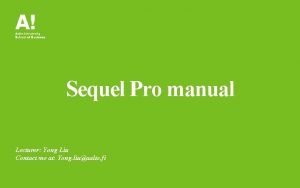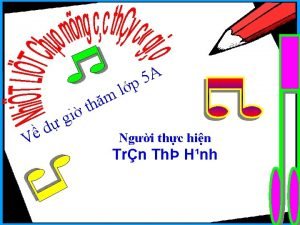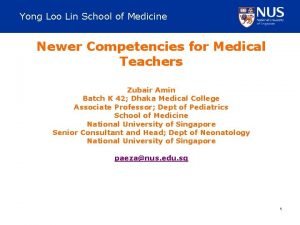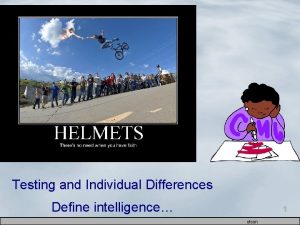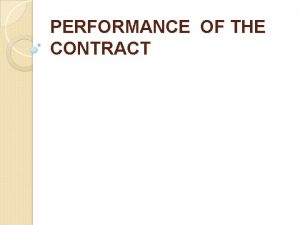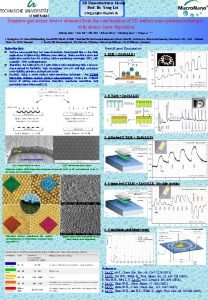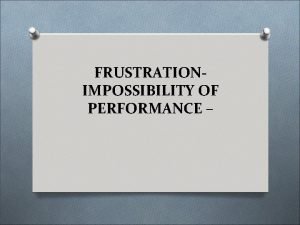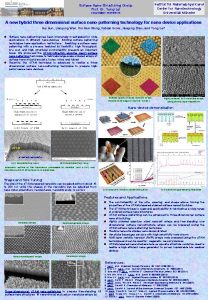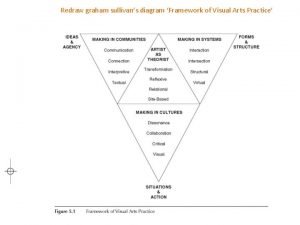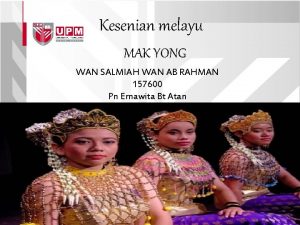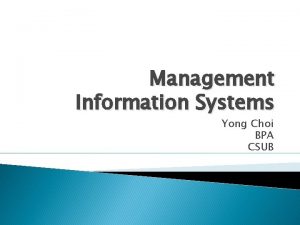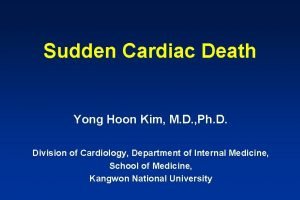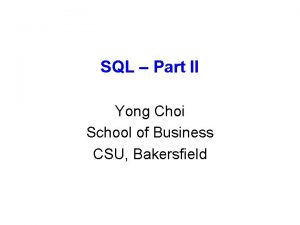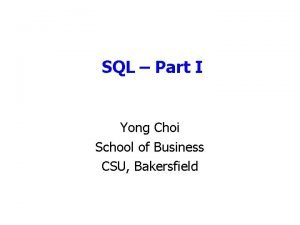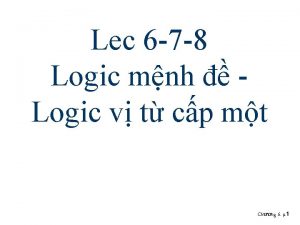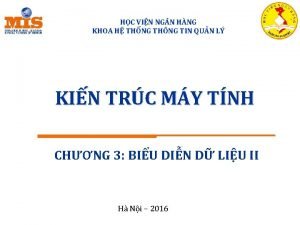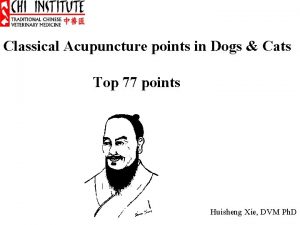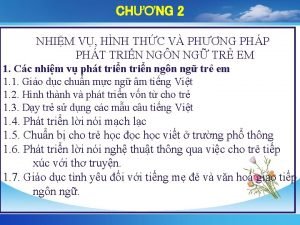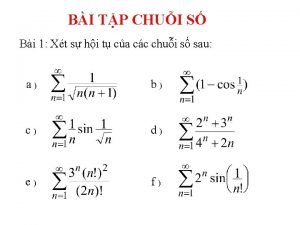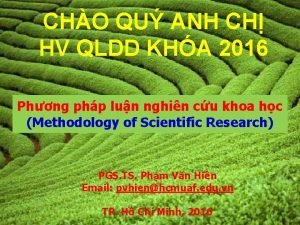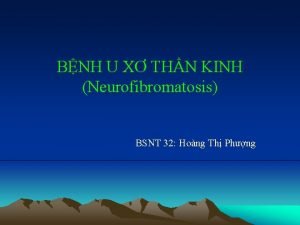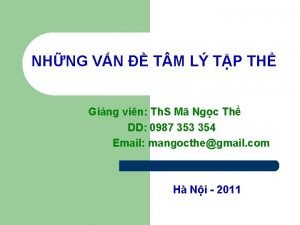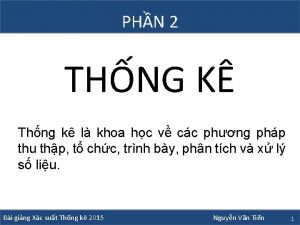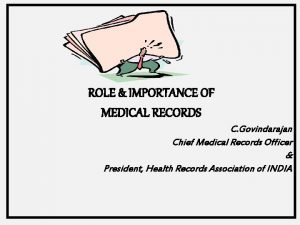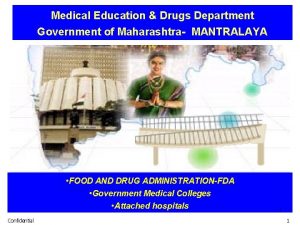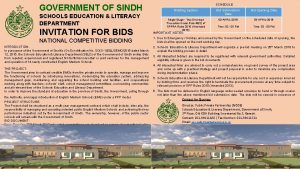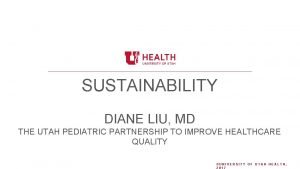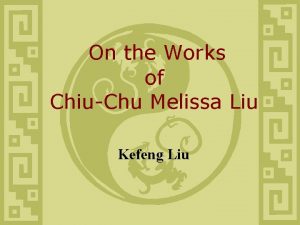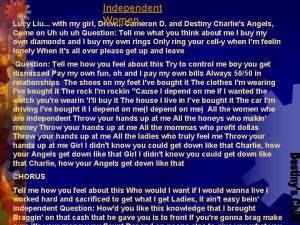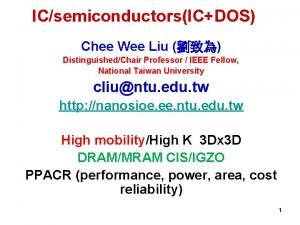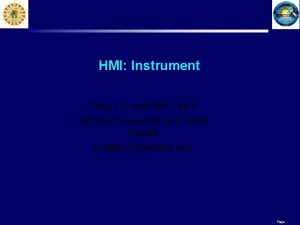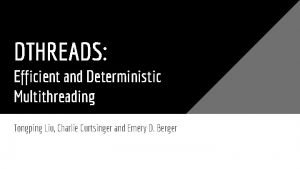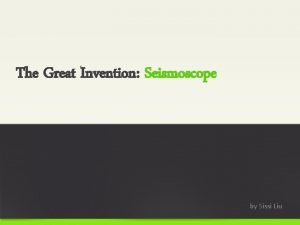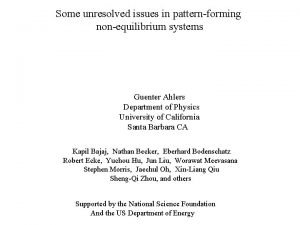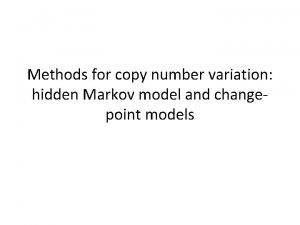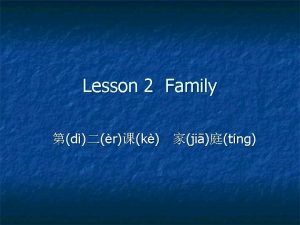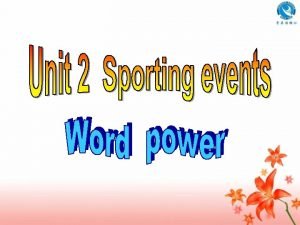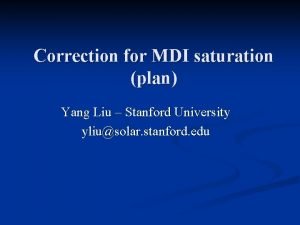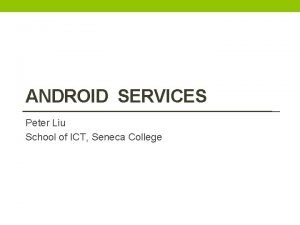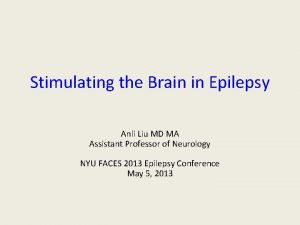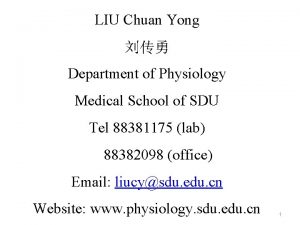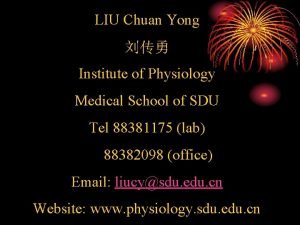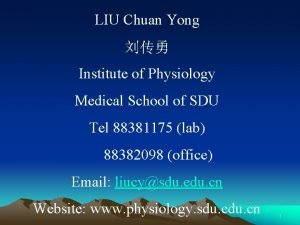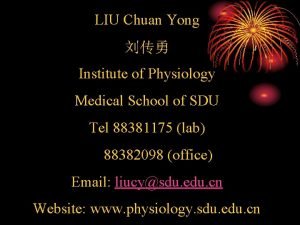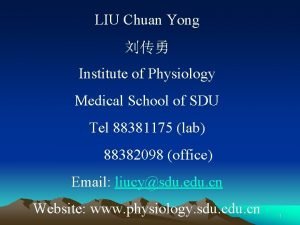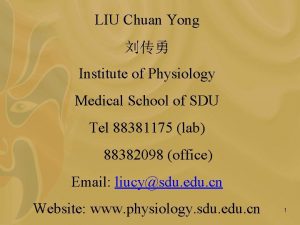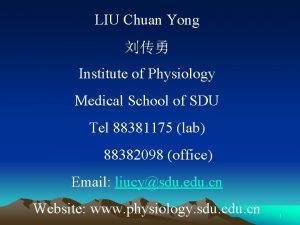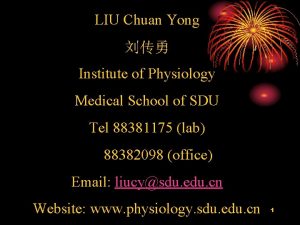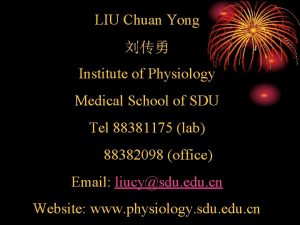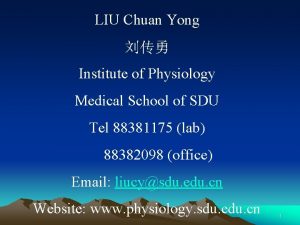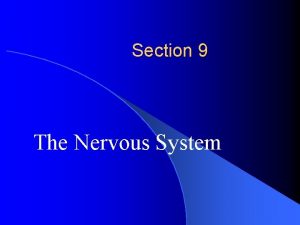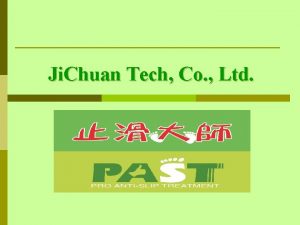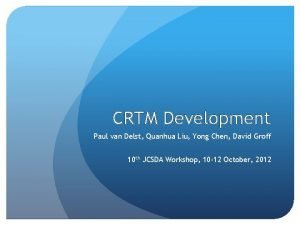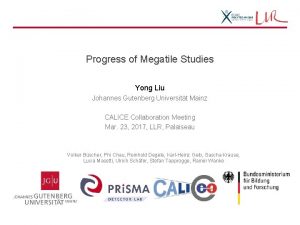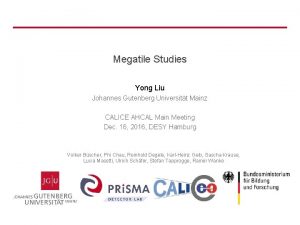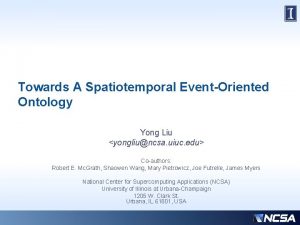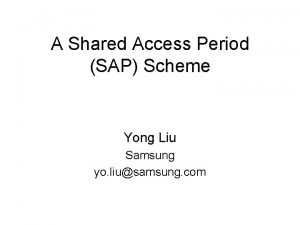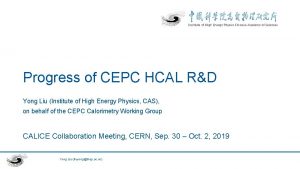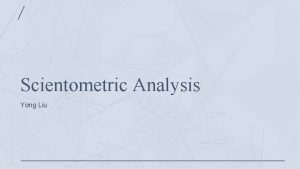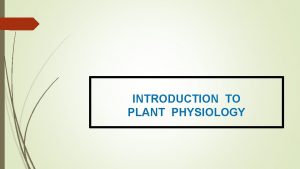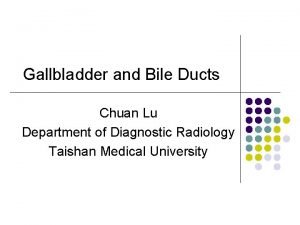LIU Chuan Yong Department of Physiology Medical School






































































- Slides: 70

LIU Chuan Yong 刘传勇 Department of Physiology Medical School of SDU Tel 88381175 (lab) 88382098 (office) Email: liucy@sdu. edu. cn Website: www. physiology. sdu. edu. cn 1

Chapter 2 Functions of The Cell 2

The Cell is Ø The basic unit of the body Ø to carry out and control the functional processes of life. Ø Contained within a limiting membrane Ø consists of various organelles suspended in cytoplasm. 3

4

General Subdivisions of a Cell A. Nucleus (regulatory center of the cell) C. Cytoplasm (everything between the plasma membrane and the nuclear compartment) B. Plasma Membrane (selectively permeable boundary between the cell and the environment ) Organelles are individual compartments in the cytoplasm 5

Basic Physiological Function of the Cells ØTransport across the cell membrane ØBioelectrical phenomena of the cell ØContraction of muscle 6

Section 1 Transport of Ions and Molecules through the Cell Membrane 7

I Review Structure of the Cell Membrane 8

What do membranes do? Ø Ø Act as a barrier AND… Receive information Import/export molecules Move/expand Membranes are Active Dynamic ! 9

The Cell Membrane System ØMembranes surrounding the cell ØMembrane systems inside the cell ØThe nucleus, endoplasmic reticulum, golgi apparatus, Endosomes (内小体) and lysosomes form the endomembrane system 10

Composition of the cell membrane Ø Protein 55% Ø Phospholipids 25% Ø Cholesterol 13% Ø Other lipids 4% Ø Carbohydrates 3% 11

Lipids Ø Ø Amphipathic Spontaneously form lipid bilayers 12

Lipids are amphipathic No np ola r Polar 13

Lipids spontaneously form structures A lipid bilayer is a stable, low energy structure Self sealing structure/eliminate free edge What drives this structured association? Exclusion of Lipids from Water… not lipid association 14

Lipid bilayers will form closed structures Ø Compartments Ø Self seal if disrupted 15

Lipids are effective barriers to some compounds Ø Ø Hydrophobic compounds can reach equilibrium quickly “Unfavored” compounds can be brought across by transport proteins Need for …. . Transport Mechanisms 16

Proteins in Membrane Bilayer Types: Ø Integral - Transmembrane: Ø ionic channel Ø ionic pump Ø carrier Ø controller (G protein) 17

Integral proteins 18

Proteins in Membrane Bilayer Types: Ø Peripheral – located mainly at the inside of membrane surface: Ø enzymes, controllers 19

Peripheral proteins Ø associated by weak electrostatic bonds to membrane proteins or lipids, Ø can be solubilized in high salt concentrations Ø associations with membrane or protein may be dynamic: transient, and regulated p. ser. arg --+++ 20

Membrane Carbohydrates: Ø Small amounts Ø located at the extracellular surface. Ø in combination with membrane proteins or lipids Ø glycoproteins or glycolipids. Ø Functions: Ø Negatively charged, let the cell to repel negative objects Ø Attach cells one to another Ø Acts as receptor substance for binding hormone such as insulin Ø Participate in immune reaction as antigen 21

22

II Transport Through the Cell Membrane 23

Categories of Transport Across the Plasma Membrane Ø Cell membrane is selectively permeable to some molecules and ions. Ø Mechanisms to transport molecules and ions through the cell membrane: ØNon-carrier mediated transport. ØSimple Diffusion. ØFacilitated Diffusion: ØVia Carrier ØChannel Ø Voltage, Chemical and Mechanical gating channel ØActive Transport 24

Categories of Transport Across the Plasma Membrane Ø May also be categorized by their energy requirements: ØPassive transport: ØNet movement down a concentration gradient Ødoes not need ATP ØActive transport: ØNet movement against a concentration gradient Øneeds ATP 25

1. Simple Diffusion ØMolecules/ions are in constant state of random motion due to their thermal energy. ØSimple diffusion occurs Øwhenever there is a concentration difference across the membrane Øthe membrane is permeable to the diffusing substance. 26

Simple Diffusion Through Plasma Membrane Ø Cell membrane is permeable to: ØNon-polar molecules (02). ØLipid soluble molecules (steroids). ØSmall polar covalent bonds (C 02). ØH 20 (small size, lack charge). Ø Cell membrane impermeable to: ØLarge polar molecules (glucose). ØCharged inorganic ions (Na+). 27

Rate of Diffusion ØSpeed at which diffusion occurs. ØDependent upon: ØThe magnitude of concentration gradient. ØDriving force of diffusion. ØPermeability of the membrane. ØNeuronal plasma membrane 20 x more permeable to K+ than Na+. ØTemperature. ØHigher temperature, faster diffusion rate. ØSurface area of the membrane. ØMicrovilli increase surface area. 28

2 Facilitated Diffusion ØDefinition: Øthe diffusion of lipid insoluble or water soluble substance Øacross the membrane Ødown their concentration gradients by aid of membrane proteins Ø (carrier or channel) ØSubstances: K+, Na+, Ca 2+, glucose, amino acid, urea etc. 29

2. Facilitated Diffusion Ø 2. 1 Facilitated diffusion via carrier Ø 2. 2 Facilitated diffusion through channel Ø 2. 2. 1 Voltage-gated ion channel Ø 2. 2. 2 Chemically-gated ion channel Ø 2. 2. 3 Mechanically-gated ion channel Ø 2. 2. 4 Water channel 30

2. 1 Facilitated Diffusion via carrier Ø Concept: Diffusion carried out by carrier protein Ø Substance: glucose, amino acid Ø Mechanism: a “ferry” or “shuttle” process 31

Facilitated Diffusion via Carrier Characteristics of carrier mediated diffusion: ØDown concentration Gradient ØChemical Specificity: ØCarrier interact with specific molecule only. ØCompetitive inhibition: ØMolecules with similar chemical structures compete for carrier site. ØSaturation: ØVmax (transport maximum): ØCarrier sites have become saturated. 32

2. 2 Facilitated diffusion through channels Ø Definition Ø Some transport proteins Ø have watery spaces all the way through the molecule Ø allow free movement of certain ions or molecules. They are called channel proteins. Ø Diffusion carried out by protein channel is termed channel mediated diffusion. 33

Facilitated diffusion through channels Ø Two important characteristics of the channels: Ø selectively permeable to specific substances Ø opened or closed by gates 34

Facilitated diffusion through channels Ø Channel: aqueous pathways through the interstices of the protein molecules. Ø Each channel molecule is a protein complex. Ø through which the ions can diffuse across the membrane. 35

Ø According to the factors that alter the conformational change of the protein channel, the channels are divided into 3 types: Ø Voltage gated channel Ø Chemically gated channel Ø Mechanically gated channel 36

2. Facilitated Diffusion Ø 2. 1 Facilitated diffusion via carrier Ø 2. 2 Facilitated diffusion through channel Ø 2. 2. 1 Voltage-gated ion channel Ø 2. 2. 2 Chemically-gated ion channel Ø 2. 2. 3 Mechanically-gated ion channel Ø 2. 2. 4 Water channel 37

2. 2. 1 Voltage-gated Channel Ø The molecular conformation of the gate responds to the electrical potential across the cell membrane 38

Voltage-gated Na+ Channels Ø Many flavors Ø nerves, glia, heart, skeletal muscle Ø Primary role is action potential initiation Ø Multi-subunit channels (~300 k. Da) Ø Ø Skeletal Na+ Channel: a 1 (260 k. Da) and b 1 (36 k. Da) Ø Nerve Na+ Channel: a 1, b 2 (33 k. Da) Ø gating/permeation machinery in a 1 subunits Three types of conformational states (close, open or activation, inactivation) - each controlled by membrane voltage 39

Na+ Channel a 1 -Subunit Structure I II IV NH 2 Outside + + + b 1 Inside CO 2 H I F M NH 2 CO 2 H I异亮氨酸;F苯丙氨酸;M甲硫氨酸 I F M - Inactivation “Gate” + + + + RVIRLARIGRILRLIKGAKGIR IVS 4 Voltage Sensor 40

How these voltage-gated ion channels work Ø movement of the voltage sensor generates a gating current Ø S 4 transmembrane segment may be voltage sensor Ø pore formed by a nonhelical region between helix 5 and 6 (postulated to form b sheets) Ø inactivation gate is in the cytoplasm 41

Na+ Channel Conformations Closed Open Inactivated Outside IFM Inside IFM Non-conducting conformation(s) Conducting conformation Another Non-conducting conformation (at negative potentials) (shortly after more depolarized potentials) (a while after more 42 depolarized potentials)

Tetrodotoxin (TTX) selectively block the voltage-gated Na+ channel 43

2. 2. 2 Chemically-Gated Ion Channel Ø channel gates are opened by the binding of another molecule with the protein; Ø causing conformational change in the protein molecule that opens or closes the gate. 44

Ligand-Operated ACh Channels 45

Ligand-Operated ACh Channels Ø Ion channel runs through receptor. Ø Ø Receptor has 5 polypeptide subunits that enclose ion channel. 2 subunits contain ACh binding sites. 46

Ligand-Operated ACh Channels Ø Ø Channel opens when both sites bind to ACh. + Ø Permits diffusion of Na into and K+ out of postsynaptic cell. Inward flow of Na+ dominates. Ø Produces EPSPs. 47

2. 2. 3 Mechanically-gated channel Øchannel opened by the mechanical deformation of the cell membrane. Ø mechanically-gated channel. Øplays a very important role in the genesis of excitation of the hair cells 48

Organ of Corti Ø When sound waves move the basilar membrane it moves the hair cells that are connected to it, Ø but the tips of the hair cells are connected to the tectorial membrane Ø the hair cell get bent. Ø There are mechanical gates on each hair cell that open when they are bent. Ø K+ goes into the cell and Depolarizes the hair cell. (concentration of K+ in the endolymph is very high) 49

2. 2. 4 Water Channel The structure of aquaporin (AQP) 50

51

Water transportation through the membrane Ø Simple diffusion Ø Ion channel Ø Water channel 52

Characteristics of the channel Ø Ø High ionic selectivity Gating channel Functional states of channel Time dependence 53

Short Review 2. Facilitated diffusion 2. 1 Facilitated diffusion via carrier 2. 2 Facilitated diffusion through channel 2. 2. 1 Voltage-gated ion channel 2. 2. 2 Chemically-gated ion channel 2. 2. 3 Mechanically-gated ion channel 2. 2. 4 Water channel 54

3 Active transport ØWhen the cell membrane moves molecules or ions uphill against a concentration gradient Ø(or uphill against an electrical or pressure gradient), Øthe process is called active transport Ø 3. 1 Primary active transport Ø 3. 2 Secondary active transport: 55

3 Active transport Ø 3. 1 Primary active transport: Øthe energy used to cause the transport is derived directly from the breakdown of ATP or some other high-energy phosphate compound Ø 3. 2 Secondary active transport: ØThe energy is derived secondarily from energy Østored in the form of ionic concentration differences between the two sides of the membrane Øcreated by primarily active transport 56

Intracellular vs extracellular ion concentrations Ion Intracellular Extracellular Na+ K+ Mg 2+ Ca 2+ H+ 5 -15 m. M 140 m. M 0. 5 m. M 10 -7. 2 M (p. H 7. 2) 145 m. M 1 -2 m. M 10 -7. 4 M (p. H 7. 4) Cl. Fixed anions 5 -15 m. M high 110 m. M 57

3. 1 Primary Active Transport Ø Hydrolysis of ATP directly required for the function of the carriers. Ø Molecule or ion binds to “recognition site” on one side of carrier protein. 58

3. 1 Primary Active Transport Ø Binding stimulates phosphorylation (breakdown of ATP) of carrier protein. Ø Carrier protein undergoes conformational change. ØHinge-like motion releases transported molecules to opposite side of membrane. 59

Na+/K+ Pump 60

A Model of the Pumping Cycle of the Na+/K+ ATPase 61

Characteristics of the Transport by Na+ pump Ø Ø Directional transport Coupling process ATP is directly required Electrogenic process 62

Importance of the + + Na -K Pump ØMaintain high intracellular K+ concentration gradients across the membrane. ØControl cell volume and phase ØMaintain normal p. H inside cell ØDevelop and Maintain Na+ and K+ concentration gradients across the membrane ØElectrogenic action influences membrane potential ØProvides energy for secondary active transport 63

3. 2 Secondary Active Transport Ø Coupled transport. Ø Energy needed for “uphill” movement obtained from “downhill” transport of Na+. Ø Hydrolysis of ATP by Na+/K+ pump required indirectly to maintain [Na+] gradient. 64

Secondary active transport co-transport (symport) out in Na+ glucose Co-transporters will move one moiety, e. g. glucose, in the same direction as the Na+. counter-transport (antiport) out in Na+ H+ Counter-transporters will move one moiety, e. g. H+, in the opposite direction to the Na+65.

4. Bulk Transport (Endocytosis and Excytosis) Ø Movement of many large molecules, that cannot be transported by carriers. Ø Exocytosis: ØA process in which some large particles move from inside to outside of the cell by a specialized function of the cell membrane Ø Endocytosis: ØExocytosis in reverse. ØSpecific molecules can be taken into the cell because of the interaction of the molecule and protein receptor. 66

Ø Exocytosis Ø Vesicle containing the secretory protein fuses with plasma membrane, to remove contents from cell. n 67

ØEndocytosis ØMaterial enters the cell through the plasma membrane within vesicles. 68

Types of Endocytosis Ø Ø Ø Phagocytosis - (“cellular eating”) cell engulfs a particle and packages it with a food vacuole. Pinocytosis – (“cellular drinking”) cell gulps droplets of fluid by forming tiny vesicles. (unspecific) Receptor-Mediated – binding of external molecules to specific receptor proteins in the plasma membrane. (specific) 69

Example of Receptor-Mediated Endocytosis in human cells 70
 Sequel pro export to csv
Sequel pro export to csv Alex liu cecilia liu
Alex liu cecilia liu Líu líu lo lo ta ca hát say sưa
Líu líu lo lo ta ca hát say sưa Yong loo lin school of medicine
Yong loo lin school of medicine Gestalt
Gestalt Cast of spring, summer, fall, winter... and spring
Cast of spring, summer, fall, winter... and spring Tong aik v eastern minerals
Tong aik v eastern minerals Kwon ji yong age
Kwon ji yong age Yong lei
Yong lei What is frustration in psychology
What is frustration in psychology Nus ay 21/22
Nus ay 21/22 Yong lei
Yong lei Yong soon min
Yong soon min Pakaian mak yong
Pakaian mak yong Csub bpa
Csub bpa Ban yong
Ban yong Causes of cardiac arrest
Causes of cardiac arrest Sql yong
Sql yong Sql query
Sql query Membrane potential
Membrane potential Logic vị từ là gì
Logic vị từ là gì Chuyển số thực sang ieee 754
Chuyển số thực sang ieee 754 Liv3lo
Liv3lo Tìm bán kính hội tụ
Tìm bán kính hội tụ Giáo dục chuẩn mực ngữ âm tiếng việt
Giáo dục chuẩn mực ngữ âm tiếng việt Tiêu chuẩn leibnitz
Tiêu chuẩn leibnitz 5 tiêu chuẩn finer
5 tiêu chuẩn finer Số 1101001 ở hệ nhị phân
Số 1101001 ở hệ nhị phân Phân loại copd
Phân loại copd Chuẩn đoán
Chuẩn đoán Xét nghiệm amylase
Xét nghiệm amylase Chuẩn mực nhóm
Chuẩn mực nhóm độ lệch chuẩn
độ lệch chuẩn đánh giá theo chuẩn nghề nghiệp giáo viên csgdpt
đánh giá theo chuẩn nghề nghiệp giáo viên csgdpt Dạng chuẩn boyce-codd
Dạng chuẩn boyce-codd Tracer card medical record
Tracer card medical record Medical education and drugs department
Medical education and drugs department California medical license for foreign medical graduates
California medical license for foreign medical graduates Gbmc medical records
Gbmc medical records Hepburn osteometric board
Hepburn osteometric board Torrance memorial cardiac rehab
Torrance memorial cardiac rehab Cartersville medical center medical records
Cartersville medical center medical records Pickens county bus office
Pickens county bus office Sol score range
Sol score range School education and literacy department
School education and literacy department Diane liu md
Diane liu md Chiu-chu melissa liu
Chiu-chu melissa liu Lucy liu with my girl drew cameron d
Lucy liu with my girl drew cameron d Chee wee liu
Chee wee liu Yang liu stanford
Yang liu stanford Tongping liu
Tongping liu Jingchen liu
Jingchen liu Karin björsten liu
Karin björsten liu Seismoscope
Seismoscope Chim đậu trên cành chim hót líu lo
Chim đậu trên cành chim hót líu lo J liu
J liu Bing
Bing Jun s. liu
Jun s. liu 732a64
732a64 Ni jia you ji kou ren
Ni jia you ji kou ren Jasmine pai
Jasmine pai J liu
J liu Hypergene liu
Hypergene liu Kevin liu toto
Kevin liu toto Liu xiang weightlifter
Liu xiang weightlifter Yang liu stanford
Yang liu stanford Seneca ict
Seneca ict Zaijia liu
Zaijia liu Changbin liu
Changbin liu Anli liu md ma
Anli liu md ma Dong liu ustc
Dong liu ustc
